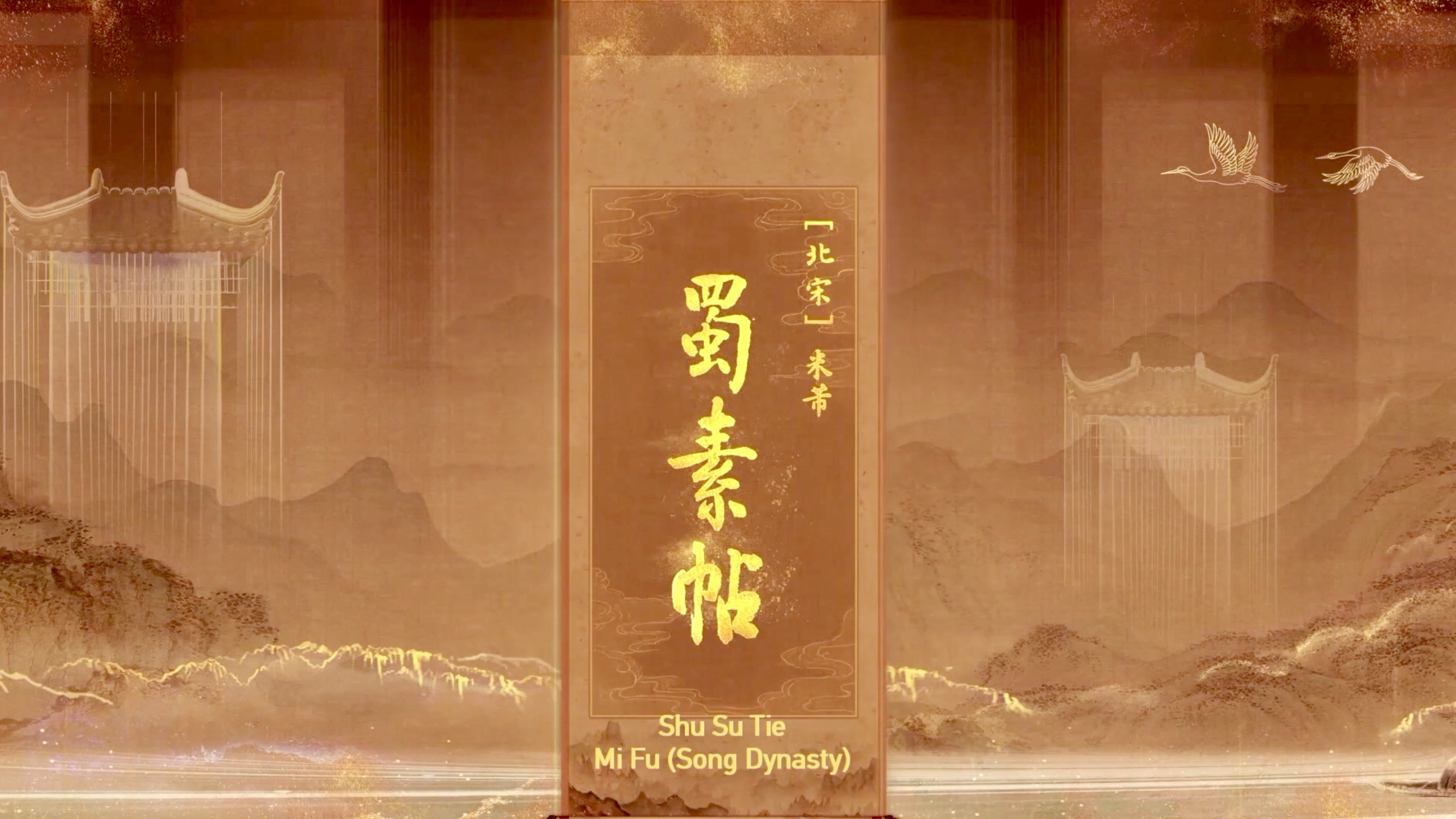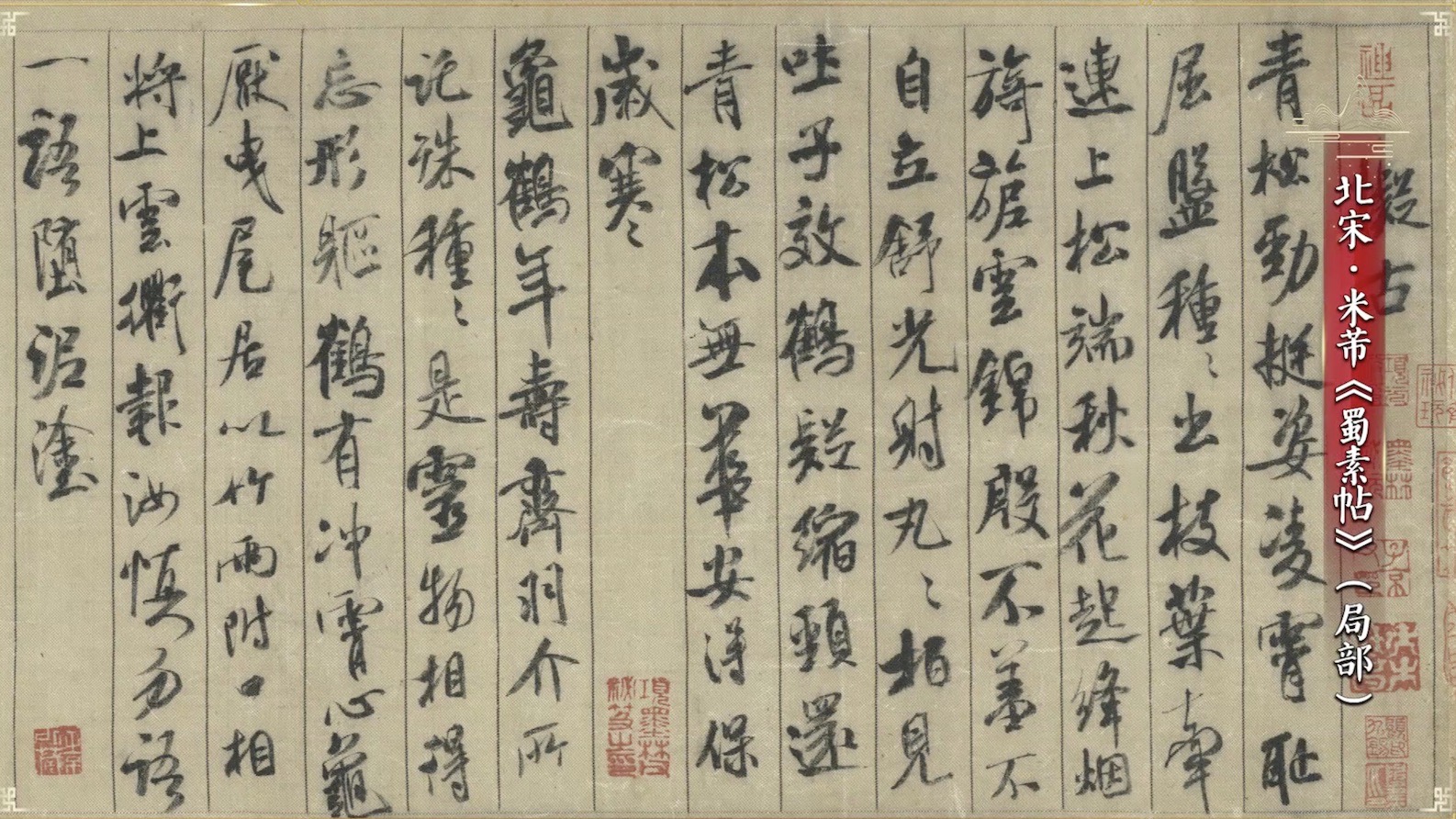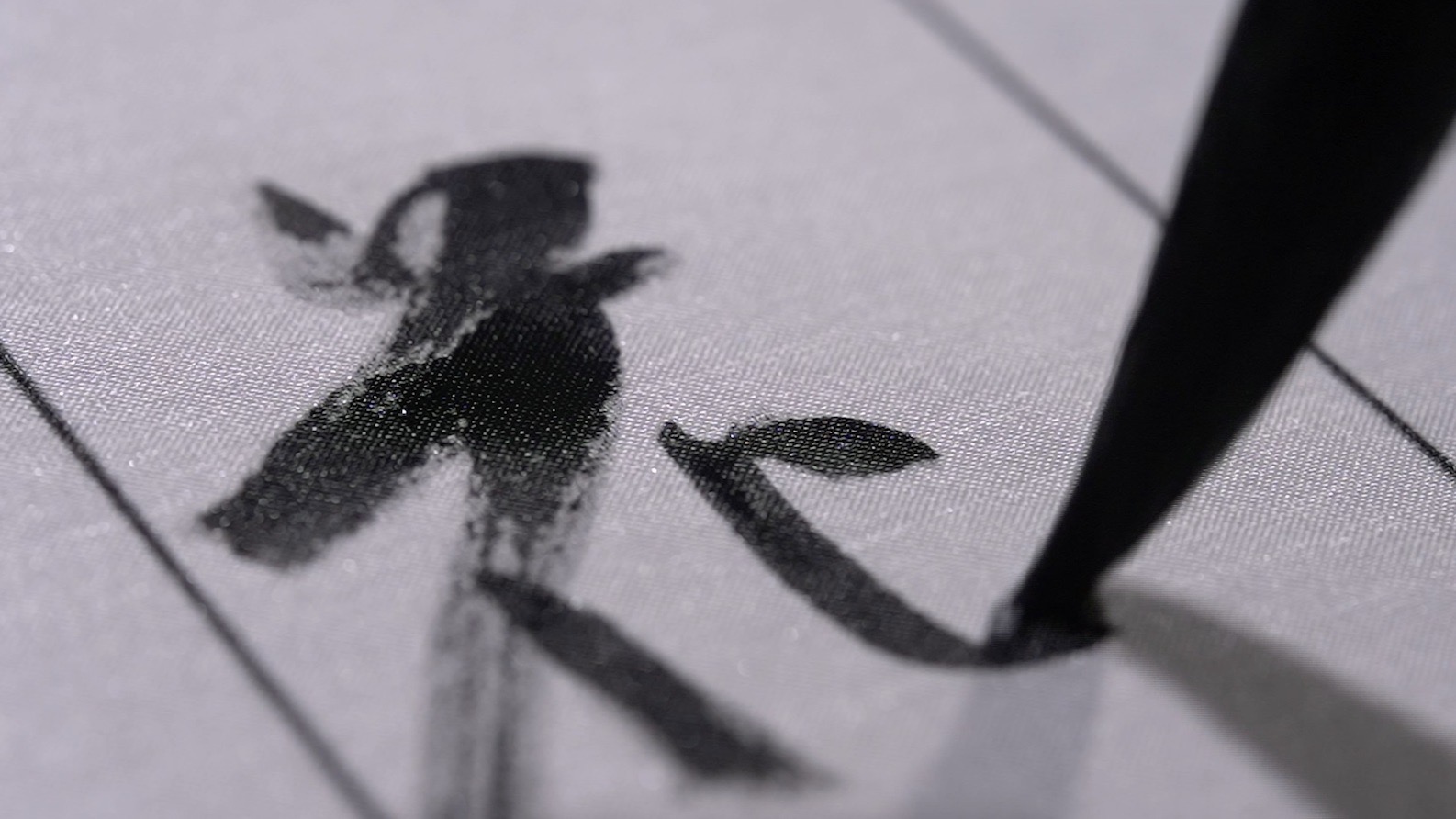Hailed as the "finest calligraphy piece in China," the work "Shu Su Tie" was crafted by renowned calligrapher Mi Fu in 1088 during the Song Dynasty (960-1127). For centuries, "Shu Su Tie" has captivated the world with its exquisite beauty and cultural significance, showcasing the remarkable silk craftsmanship of ancient China.
13:01

"Shu Su Tie" comprises eight poems meticulously inscribed on a delicate silk fabric called "Shu Su" produced in Sichuan Province during the Song Dynasty.
According to analysis undertaken by Zhang Hecai, director of the China Choudu Silk Museum, "Shu Su" is most likely a type of damask.
"The character 'Shu' literally refers to the ancient name of Sichuan, while the character 'Su' refers to a type of plain weave fabric such as satin, silk or damask. By examining the structure of the work, I believe it should be damask because it has a diagonal weave at a 45-degree angle," said Zhang.

A detail from the "Shu Su Tie" created by Song Dynasty (960-1127) calligrapher Mi Fu /CGTN
A detail from the "Shu Su Tie" created by Song Dynasty (960-1127) calligrapher Mi Fu /CGTN
The delicate texture and enduring beauty of "Shu Su" have inspired generations of calligraphers, poets and artists to create remarkable works on its surface. However, the "Shu Su Tie" created by Mi Fu at the age of 38 might be the only artwork named after its material.
Shen Hao, a professor at the China Academy of Art, said he believes that the quality of a calligraphy work is influenced by several factors, including the right person, place and time.
"When a person reaches the age of 38, they are considered to be in their prime. Mi Fu, one of the 'Four Great Calligraphers of the Song Dynasty,' had extensive experience in calligraphy and integrated it into his daily life. His exceptional skills and bravery allowed him to successfully handle the challenges that many others struggled with. Renowned calligrapher Dong Qichang praised Mi Fu for his ability to draw inspiration from the past, comparing it to 'capturing an elephant with the strength of a lion.' This ability ultimately enabled him to tackle 'Shu Su' and create such a masterpiece," said Shen.

Painting on silk fabric offers calligraphers a different experience in practicing calligraphy on Xuan paper. /CGTN
Painting on silk fabric offers calligraphers a different experience in practicing calligraphy on Xuan paper. /CGTN
"Shu Su" stands as a testament to the exceptional craftsmanship of ancient Sichuan and its significance to Chinese history. Luckily, through the ages, the technique of producing this kind of silk fabric has been preserved to this day. For example, a factory in Nanchong, Sichuan Province, has been producing a type of traditional damask that undergoes a semi-degumming process using modern technology which is suitable for calligraphy creation.
And painting on silk fabric offers modern calligraphy enthusiasts and scholars a very much different experience in practicing calligraphy on Xuan paper. "When practicing 'Shu Su Tie,' as my brush touches the silk fabric, I sense an incredible fusion of two fundamental elements of Chinese culture – calligraphy and silk," said Dai Yue, deputy director of the China Calligraphers Association. He added that the strokes were not merely lines, but rather a symphony of expression, paying homage to the wisdom and creativity of ancient Chinese civilization.